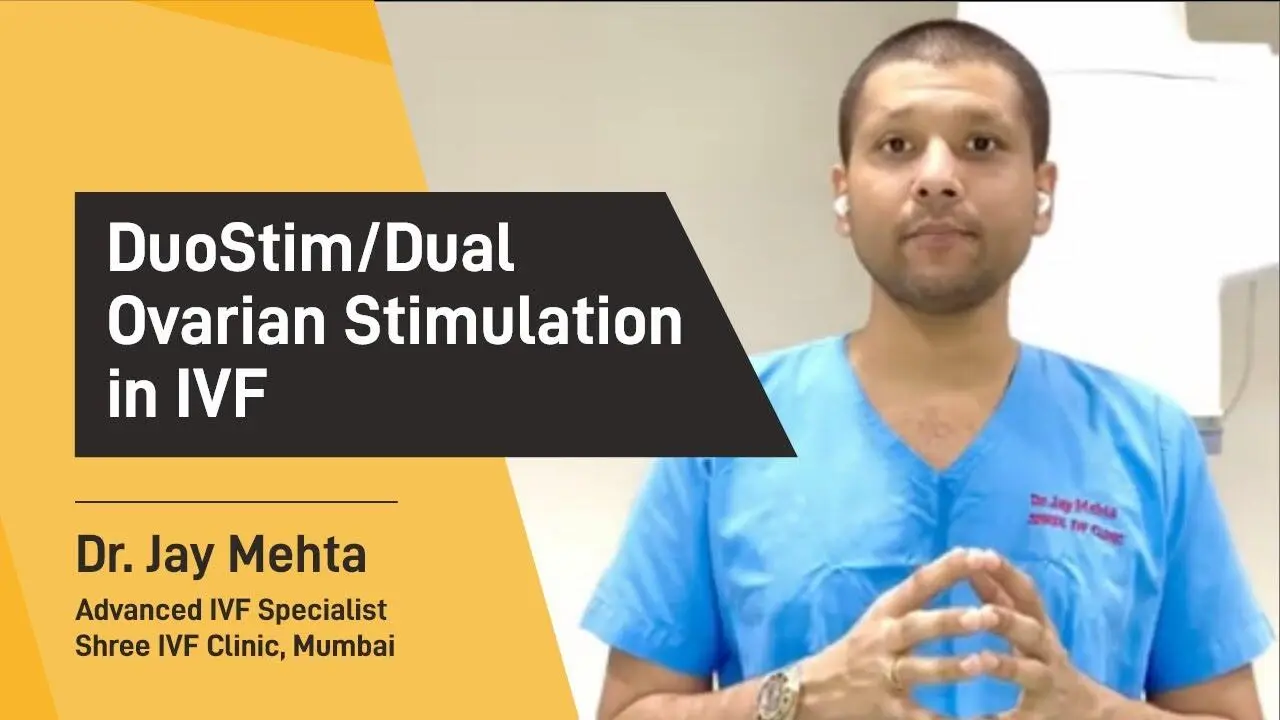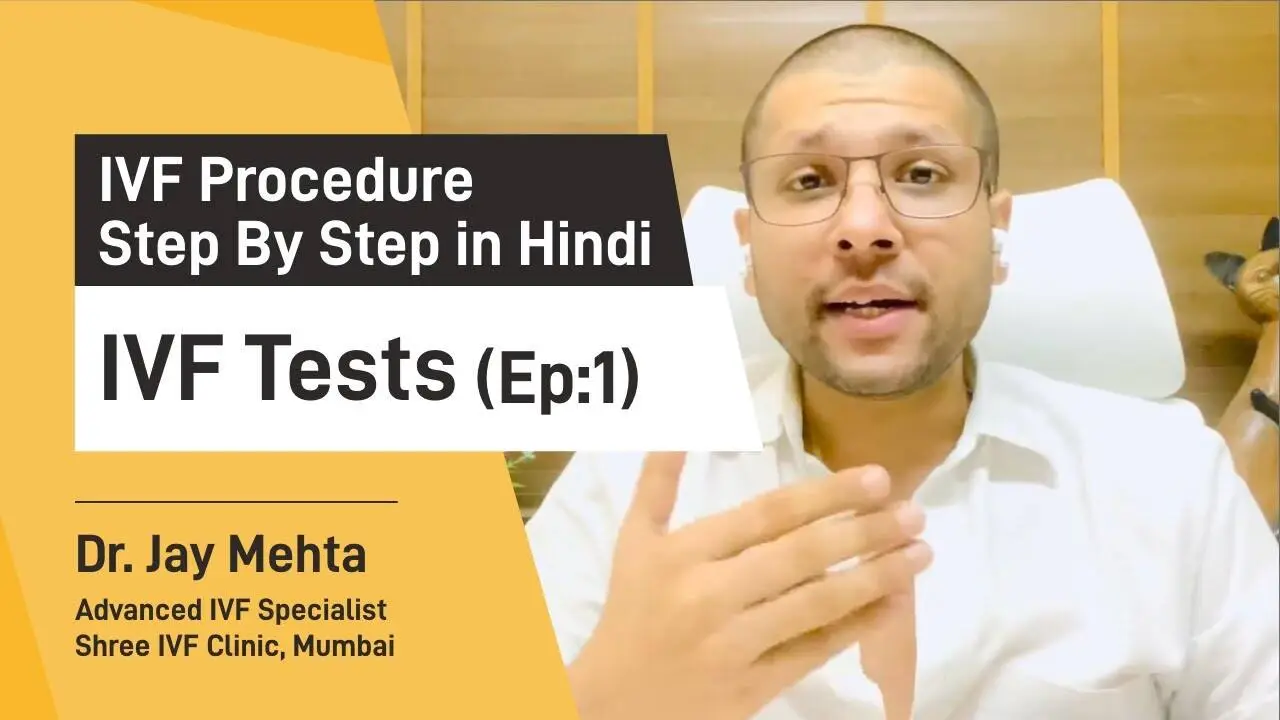TRIGGER Injection in IVF | Dual Trigger in IVF
UPDATED ON 1ST AUG. 2024
Infertility has become an increasingly common concern, affecting many people worldwide. As a leading center in addressing this condition, we often receive questions about infertility and its management. To help you better understand this topic, we decided to create this detailed blog to address these concerns comprehensively.
AUTHOR
Dr Jay Mehta
Scientific Director & IVF Specialist with 10+ years of experience
TREATMENT
GET IN TOUCH ON
What is Infertility?
Infertility is the inability to conceive after one year of regular, unprotected intercourse. It can affect both men and women and can result from various factors. In women, common causes include ovulatory disorders, tubal blockage, endometriosis, and uterine abnormalities. In men, infertility often stems from low sperm count, poor sperm motility, or other sperm abnormalities.
Why is Infertility Increasing?
Infertility is becoming more prevalent, and there are several reasons for this rise. Lifestyle changes, such as delayed childbearing, increased stress levels, poor diet, and exposure to environmental toxins, play significant roles.
Additionally, busy clinicians often cannot take time off from their obstetric practices in smaller cities to learn about the latest infertility treatments, which further complicates access to quality care.
Follicular Maturation
Follicular maturation is a fundamental process within the ovary that directly impacts a woman’s ability to conceive. This intricate series of events ensures the proper development and release of a mature egg, creating the necessary conditions for fertilization.
The Role of the Follicle
The ovary houses numerous follicles, each containing an immature egg (oocyte). As a woman progresses through her menstrual cycle, a select group of follicles begins to develop. These follicles nurture the oocyte, providing it with the necessary environment for maturation. The size of the follicle is a crucial indicator of its developmental stage.
A mature follicle typically reaches a diameter between 17 and 21 millimeters. Interestingly, the oocyte itself plays a vital role in this process. It secretes chemical signals that influence the follicle’s growth and development.
The Hormonal Cascade
As the follicle matures, a well-coordinated hormonal interplay takes place. The pituitary gland, located at the base of the brain, releases follicle-stimulating hormone (FSH).
FSH acts on the developing follicle, stimulating its growth and promoting the maturation of the enclosed oocyte.
As the follicle reaches a critical stage, it begins to produce increasing amounts of estrogen. Estrogen, in turn, signals the pituitary gland to decrease FSH production and initiate a surge of luteinizing hormone (LH). This LH surge serves as the final trigger.
It prompts the oocyte to complete its maturation and stimulates the follicle to rupture, releasing the mature egg into the fallopian tube – a process known as ovulation.
Consequences of Disrupted Maturation
In some cases, the oocyte may not develop properly, leading to disruptions in the maturation process. If the oocyte is compromised, it may not send the necessary signals for the follicle to rupture. Consequently, instead of ovulation, the follicle might continue to grow under the persistent influence of estrogen. This can result in the formation of a fluid-filled sac called a cyst.
The Importance of Follicular Maturation
Successful follicular maturation is essential for achieving pregnancy. By ensuring the proper development and release of a healthy egg, this process creates the foundation for fertilization. When investigating potential fertility issues, doctors often evaluate follicular development and ovulation to identify any underlying problems.
How Do We Monitor and Trigger Ovulation?
In a natural menstrual cycle, once the follicle reaches an appropriate size (18 to 21 millimeters), a natural surge of LH ensures the oocyte’s maturation and release. In assisted reproductive techniques, such as in vitro fertilization (IVF), clinicians monitor the follicle’s growth and use triggers to induce ovulation at the optimal time.
What Triggers Are Used in Assisted Reproductive Techniques?
There are several triggers used to induce ovulation in assisted reproductive techniques:
1. Human Chorionic Gonadotropin (HCG) Trigger: HCG is commonly used because it mimics LH and is easy to produce. However, prolonged action of HCG can cause problems like ovarian hyperstimulation syndrome (OHSS) and endometrial asynchrony.
2. Gonadotropin-Releasing Hormone (GnRH) Agonist Trigger: GnRH agonists induce a natural LH surge but can lead to premature luteolysis (breakdown of the corpus luteum), making it unsuitable for fresh cycles.
3. Dual Trigger: Combining HCG and GnRH agonists can optimize oocyte maturation and yield better results in some cases.
Also Read: How Does HCG Induce Ovulation?
How Do Different Triggers Work?
- HCG Trigger: When using HCG, the trigger dose is usually 5000 to 10,000 international units. This dose ensures that the oocyte reaches maturity and is released from the follicle. However, because HCG stays in the system longer, it can cause issues like OHSS.
- GnRH Agonist Trigger: This trigger causes an immediate but short-lived surge of LH, leading to oocyte maturation. The drawback is that the corpus luteum formed after this trigger may not function optimally without additional support.
- Dual Trigger: Using both HCG and GnRH agonist provides the benefits of both triggers. The GnRH agonist ensures an initial surge, while HCG provides prolonged support for follicular maturation.
How to Choose the Right Trigger?
Choosing the right trigger depends on several factors, including the patient’s response to stimulation, the number of follicles, and the specific treatment protocol. For fresh cycles, HCG is often the preferred choice. For frozen embryo transfer (FET) cycles, GnRH agonist or dual trigger might be used to ensure optimal oocyte quality without risking OHSS.
What Are the Common Issues with Triggers?
One common issue is the timing and dosage of the trigger. Administering the trigger too early or too late can affect oocyte quality and cycle outcome. Another issue is the patient’s response to the trigger. Some patients may not respond adequately to standard HCG doses, requiring adjustments or alternative triggers.
How to Handle Poor Responders?
For poor responders, HCG remains the trigger of choice due to its prolonged action, ensuring even late-maturing follicles are adequately stimulated. In some cases, clinicians might use a higher dose or a dual trigger to maximize oocyte yield.
What About Hyper Responders?
In hyper responders, the risk of OHSS is a concern. Therefore, clinicians often avoid high doses of HCG. Instead, a GnRH agonist trigger with or without a low dose of HCG might be used to reduce the risk of OHSS while ensuring good oocyte quality.
Wrapping Up
Infertility can be challenging, but understanding the intricacies of follicular maturation and the use of different triggers can significantly improve treatment outcomes. By choosing the right trigger based on individual patient needs, clinicians can optimize oocyte quality and increase the chances of successful conception.
AUTHOR
Dr Jay Mehta
Scientific Director & IVF Specialist with 10+ years of experience
TREATMENT
CALL US 24/7 FOR ANY HELP
GET IN TOUCH ON
Share Article on
Recommended Reading
DuoStim/ Dual Ovarian Stimulation in IVF
DuoStim is an option for women with low AMH, providing stimulation twice in one cycle from days 2-4 of their period to enhancing the chance for egg retrieval
Everything You Need to Know About IVF Tests
IVF tests performed before undergoing IVF include sonography, AMH, thyroid tests, and semen analysis to ensure a successful treatment process
Is There a Twin Pregnancy in IVF?
Twin pregnancies are not guaranteed with IVF. On average, only 35% of two-embryo transfers result in twins





